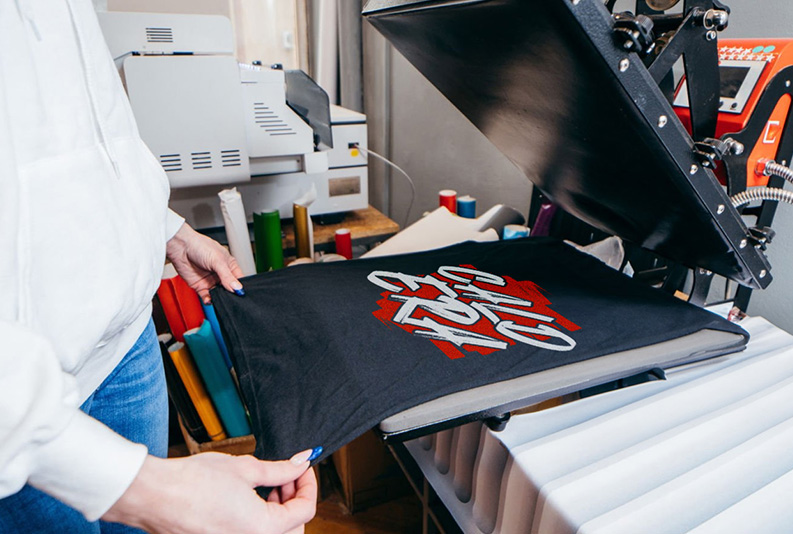Choosing the right printing method can make or break your custom apparel. With options like sublimation, embroidery, silkscreen, and direct-to-film (DTF), it’s easy to get confused. In this guide, we break down each technique, highlighting their strengths, drawbacks, and best use cases, so you can confidently pick the method that matches your design, budget, and brand goals.
What is Sublimation Printing?

Sublimation printing is a process where heat is used to transfer dye onto materials such as polyester and polymer-coated substrates. The dye is transfered into the fibers, creating a permanent, full-color image that is vibrant and long-lasting. Sublimation is ideal for intricate designs and all-over prints.
Best for full color prints
| Pros | Cons |
| Soft, breathable finish (no ink layer) | Only works on polyester (or high-polyester blends) |
| Perfect for vibrant, detailed designs | Limited to light-colored fabrics |
| No cracking or fading |
What is Embroidery?

Embroidery involves stitching a design onto fabric using thread. This method creates a textured, high-quality finish that is durable and professional-looking. Embroidery is often used for logos on hats, jackets, and polo shirts, adding a touch of sophistication to the garment.
Best for Logos on polo shirts and uniforms.
| Pros | Cons |
| High-end, professional look | Not ideal for highly detailed or large designs |
| Extremely durable (won’t fade or peel) | More expensive than printing |
| Great for branding and corporate wear | Heavier feel on thin T-shirts |
What is Silkscreen Printing?

Silkscreen printing, also known as screen printing, involves pushing ink through a mesh screen onto the material. This method is great for bold, opaque designs with vibrant colors. Silkscreen printing is cost-effective for large quantities and is commonly used for t-shirts and other apparel.
Best for Bold logos, simple graphics, and text
| Pros | Cons |
| Vibrant, long-lasting colors | Less efficient for full-color or photo-like designs |
| Cost-effective for large quantities | Not ideal for small orders (higher setup costs) |
| Works well on most fabrics | Each color requires a new screen (more colors = higher cost) |
What is Direct To Film (DTF) Printing?

Direct to film (DTF) printing is a relatively new method where a design is printed onto a special film, then transferred onto the material using a heat press. DTF printing allows for detailed, full-color designs on a variety of fabrics, including cotton and polyester. This method is gaining popularity for its versatility and high-quality results.
Best for full-color designs
| Pros | Cons |
| Works on cotton, polyester, and blends | Can feel thicker than other methods |
| Full-color, high-detail designs | Slightly less breathable than sublimation |
| Great for short runs and custom one-offs | Durability can vary based on film and press quality |
Conclusion
Each printing method has its own strengths and is suitable for different purposes. Sublimation is great for all-over prints, embroidery adds a touch of elegance, silkscreen printing is cost-effective for bulk orders, and DTF printing offers versatility and high-quality results. Consider the design, material, and quantity when choosing the best printing method for your project.
Not sure which method to choose? Chat with us on WhatsApp!

